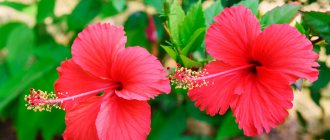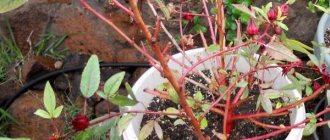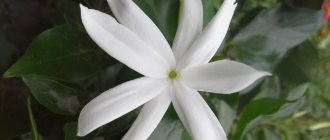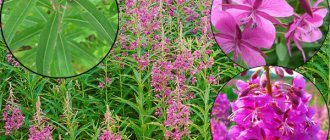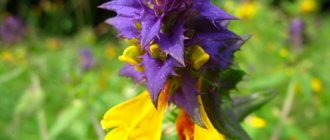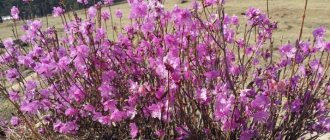Hibiscus for digestion
Hibiscus fruit acids act as a laxative.
This tea is recommended for people suffering from constipation. Hibiscus against Cancer
Hibiscus is rich in polyphenols, which have been shown to have powerful anti-cancer properties.
There are also studies that anthocyanins contained in hibiscus flowers can have antitumor properties. Hibiscus tea for urinary tract infections
Thanks to its diuretic effect and the content of organic acids that have antiseptic properties, hibiscus tea is considered a good helper during the treatment of cystitis (the effect is similar to that of cranberry).
Hibiscus for immunity
Hibiscus tea contains vitamin C, a strong antioxidant that we know has a positive effect on strengthening our immunity.
The presence of iron and minerals in the drink also helps maintain the balance of the immune system. Hibiscus for Colds A
test-tube study found that rosella extract fights eight strains of bacteria and is as effective as some medications used to treat bacterial infections. In addition, hibiscus has a softening and protective effect on the internal tissues of our body, performing an anti-inflammatory function on the mucous membranes. This makes it useful for gingivitis, sore throat and colds.
Who is the hibiscus decoction recommended for?
Hibiscus will be useful in the following cases:
- with high blood pressure;
- to replenish antioxidant levels and rejuvenate;
- when did the first signs of a cold appear?
- if you need to lower your temperature without taking pills;
- to normalize the menstrual cycle;
- in the treatment of various infections;
- as a prevention of oncology;
- if you want to get rid of toxins;
- to reduce bad cholesterol levels;
- if there are problems with stool (constipation);
- for the treatment and prevention of helminthiasis;
- for weight loss purposes.
Harm of hibiscus
Rosella flowers have a number of contraindications, which you should definitely familiarize yourself with if you plan to regularly brew hibiscus.
- Hibiscus tea may affect estrogen levels—both pregnancy and fertility. If you are trying to get pregnant or are already pregnant, you may want to avoid or reduce the amount of hibiscus in your diet.
- Hibiscus lowers blood pressure, so it can be harmful to hypotensive patients.
- The acidic properties of hibiscus will definitely not benefit people suffering from gastritis with high acidity or peptic ulcers. If you have gastrointestinal diseases, it is best to consult your doctor.
- It is not recommended to drink hibiscus tea for people with urolithiasis.
- With great caution, undiluted hibiscus should be given to children under 3 years of age.
- Not recommended for people with poor tooth enamel.
- Also, in rare cases, hibiscus can cause allergies.
In folk medicine, it is believed that hot (not chilled) hibiscus tea can raise blood pressure for a short period of time, which makes it supposedly dangerous for hypertensive patients. However, scientific studies of hibiscus have shown that it does not contain any components (caffeine, tannins or other substances) that could affect the increase in blood pressure. The pressure in this case increases due to the temperature of the drink and/or the addition of sugar, but not due to the properties of the hibiscus itself.
Botanical description, history of discovery, geography of Hibiscus sabdariffa
Its homeland is Africa, more precisely Egypt and Sudan, but now it is grown in almost all tropical and subtropical countries of the world. People have been using hibiscus for a long time. Archaeologists have found this plant more than once in tombs. In Egypt, it remains the national drink today. In Europe, they learned about the Sudanese rose in the 17th century, but the tea was not particularly popular. It spread here not so long ago - at the end of the last century, when trips to African states became available.
Hibiscus sabdariffa is a member of the Malvaceae family. Grows up to 3.5 meters. Its stems and leaves are green in color, with a slight reddish tint. The flowers reach 7 centimeters in diameter and are very fragrant.
Tea with hibiscus (in this case we mean hibiscus) contains a large amount of fruit acids, biologically active substances, vitamins and minerals. He:
- regulates blood pressure;
- has antispasmodic and diuretic effects;
- removes excess metabolic products from the body;
- has a choleretic effect;
- increases liver protection from negative influences;
- speeds up metabolism;
- improves the general condition of the body.
We invite you to watch a video about hibiscus tea and its benefits:
Which hibiscus is better to buy?
As a drink base, hibiscus can be available in different forms:
- dry flower petals for brewing;
- tea bags;
- liquid extract;
- encapsulated powder;
- ready-to-drink liquid tea in bottles.
In Russian stores you can most often find the first two types. In this case, it is better to give preference to whole petals, which are the most versatile and safe product in terms of contraindications. In terms of price, it is better to focus on the middle segment - this will allow you to avoid unnecessary expenses and at the same time not be mistaken with quality.
As for the appearance of the petals, choose the most solid, non-crumbling flowers of a bright burgundy color.
Hibiscus flower, what is it, description of the plant
Hibiscus is also popularly called hibiscus or Sudanese rose. The flower belongs to the Malvaceae family and to the group of herbaceous perennial crops.
The homeland of hibiscus is India, but today this flower can be found in Europe, including the Russian Federation and Ukraine, Mexico and Egypt.
Characteristics and external data:
- In natural conditions, the plant looks like a spreading shrub; its height is approximately three and a half meters.
- The root system is strong and powerful.
- The color of the stems of young plants is green-red, while more mature ones become green-gray. Lignified shoots are covered with bark on top.
- The foliage is oval-shaped, rough to the touch. Young leaves have a pointed tip.
- The inflorescences are small, with a diameter of six to seven centimeters. They grow solitarily and have a short peduncle. The buds are bright red, sometimes purple, crimson, cream and pink are found. The perianths are deep red in color, with a fleshy and dense structure.
After the buds wither, calyxes appear on the flower. At this moment, they are maximally saturated with juice, and therefore they increase significantly in mass. It is during this period that the collection takes place.
Dried cups are used in cooking to prepare a tonic drink. The taste of tea depends on the area where it is grown.
For example, hibiscus grown in Egypt has a cherry flavor with a pleasant sourness, but Mexicans have a salty taste, and the drink itself has a bright orange color.
In addition to cooking, the plant is actively used in medicine.
Petals, seeds and leaves have healing properties. But the roots and stem are used for industrial purposes for dyeing fabric.
How to brew hibiscus tea correctly?
Let's tell you a secret: in fact, there are no mandatory rules regarding the preparation of hibiscus. Hibiscus flowers can be boiled, brewed, infused in cold water, diluted with juices and other types of tea, topped with ice or diluted with boiling water - whatever you want, as long as it tastes good to you. Hibiscus is wonderful precisely because it opens up wide scope for culinary experiments, and we are happy to share the most accessible and interesting recipes. You can take them unchanged or try to get creative, starting from the existing base.
Stages of hibiscus production: collection and processing
The process of preparing red hibiscus tea consists of growing hibiscus, collecting inflorescences and then drying them. As a rule, Sudanese rose is grown on plantations on an industrial scale. Hibiscus flowers are large, double, but it is important to know that under them are hidden calyxes (perianths), which are also used to prepare hibiscus.
After the flowers have withered, the perianths quickly increase in height and volume, becoming juicy and fleshy. To prevent this, they are cut by hand. If you are late in collecting, the perianth will form a seed capsule, which will soon dry out and open, but will no longer be suitable for tea.
The collected inflorescences are separated from the perianths (manually or with special devices). The raw materials are dried in fresh air, protected from sunlight. It is important to follow the correct drying process so that the inflorescences do not lose their shade and brightness. Pale or too dark flowers have worse taste characteristics.
A high-quality finished hibiscus should be a mixture of whole flowers and petals with a small inclusion of thin stems that soften easily when brewed. There are several types of hibiscus:
- Chopped bud - produced using machines, has faster brewing and contains fewer nutrients.
- Whole bud - processed manually at all stages of production, brewed longer, and releases the maximum amount of vitamins and microelements.
- The bags are the so-called “dust”, waste from the production of chopped hibiscus. It brews instantly and has almost no beneficial properties.
In addition, small scraps of leaves and twigs, dust and foreign inclusions can also be found among whole buds. This means that waste was mixed into the tea to make it cheaper. This mixture should not be chosen for tea drinking.
We recommend reading an interesting article about how hibiscus tea affects blood pressure.
Hot brew (winter recipe)
There is nothing better than warming up with a good cup of hot tea during the cold season. Hot brewing is the easiest way to enjoy hibiscus tea, and you can prepare it just like you would any other regular tea. Remember, however, that hibiscus can only withstand one brew.
Recipe
Boil water (150–200 ml) and pour in 2 tsp. dried hibiscus petals in your teapot, cover and wait. Depending on how strong you like your infusion, let the tea steep for 2-3 to 10 minutes. When hibiscus is fully cooked, it acquires a thick, velvety texture and a dark, rich color. To prevent the drink from being too sour, add a little honey to taste. If you wish, you can dilute it with boiling water or drink it pure. If you want to preserve the maximum beneficial properties of hibiscus, brew the petals with water at a temperature no higher than 80 degrees.
How to plant cuttings
It is somewhat more difficult to grow using this method, but at the same time you can preserve the decorative appearance of the plant. When planting, strictly follow agricultural technology, and it consists of several important points.
- Young cuttings taken from one-year-old shoots are used. Those left after trimming the top part of the plant will also take root well.
- If you choose spring or the second decade of years for such propagation, then the cuttings will take root much better than in other periods of the year, since they will have time to get stronger before the onset of cold weather.
- When preparing cuttings from a bush, make sure that their lower cut is located at least half a centimeter below the bud. The optimal length of the cutting should be 15 centimeters, and there should be four living buds on it.
- A day before planting, the planting material is placed with its lower part in a solution that stimulates growth.
Experienced gardeners advise planting cuttings in a soil mixture that has been previously moistened and consists of sand, humus and peat. To create a greenhouse effect, the cuttings must be covered with a plastic container with transparent walls. A bottle of the right size will do just fine. The material is ready for complete rooting after a month and a half, during which time it must be properly cared for. The recommended temperature is 20-25 degrees: these indicators should be monitored. The substrate should be moderately moist. The plant is harmed by both excess moisture and excessive dryness.
If the cuttings rot or begin to hurt, get rid of them without regret. From those that remain suitable for planting, pinch off the top immediately after the buds appear. Otherwise, the seedlings will not branch in the future.
Cold brew (summer recipe)
This method is very popular in hot countries such as Sudan, Lebanon, Turkey, etc. Like all varieties of cold brew, cold brewing hibiscus involves infusing the petals for a long time. It can be served either neat or with ice. It is noteworthy that even a two-hour infusion allows you to extract almost the same amount of substances as standard brewing with boiling water, but ideally it is still better to let the drink sit overnight. The resulting tea will be much smoother and sweeter than usual, and you may not even need to supplement it with sweeteners.
Recipe
Take 4-5 tablespoons of whole dried rosella petals, rinse them and add one liter of clean, cool water to a jug. Place the jug in the refrigerator and let the drink steep for several hours. If you wish, you can add a cinnamon stick or other favorite spices to the petals. The finished infusion can be stored in the refrigerator for about a week.
Which varieties of Hibiscus have beneficial properties similar to Sudanese rose?
Basically, all varieties of hibiscus are decorative . There are more than 250 of them. Most often you can find the following types of hibiscus:
- terry;
- tree-like;
- Syrian;
- grassy.
A plant that, like the Sudanese rose, is used as food is Hibiscus esculentus, or okra.
It is grown as a vegetable spice crop in many southern countries. It grows from 30-50 cm to 2 meters high, has long fruits in the form of pyramidal pods.
Unripe 3-5 days old fruits are eaten as seasonings in various cuisines around the world. A drink that tastes like coffee is made from the ripened seeds. Like Sudanese rose, okra contains a lot of fiber, oils, vitamins , and microelements. It contains a large amount of magnesium, calcium, manganese, iron, and ascorbic acid.
The types and varieties of hibiscus are described in detail here, and the properties of the plant can be found in this article.
Cold Brew Express Method (7 Minute Recipe)
Proper cold brewing takes a long time. To prepare cold hibiscus, in which the aroma of tea is fully revealed, you need to let the drink brew for several hours (from evening to morning is ideal). But we don’t always have the opportunity to plan everything according to the rules. Therefore, we offer you an abbreviated and simplified version. If, after a walk on a very hot day, you urgently want a large glass of iced hibiscus tea, use this express method.
Recipe
Take 1/4 cup water, 2 teaspoons crushed dried hibiscus and plenty of ice.
Boil water, pour it over the hibiscus flowers and let them steep for at least 5 minutes. This time is usually sufficient for extraction to occur.
Remove the petals (filter the infusion) and add 1-2 tablespoons of honey or sugar. Only then add ice to the glass. Place the first few pieces at once, and the subsequent ones will allow the drink to cool to the desired degree.
Important: if you add sugar to already cooled water, it will not dissolve.
Is it possible to grow Sudanese rose at home?
It is possible to grow hibiscus at home. Hibiscus sabdariffa is an annual plant that does well in fertile, sandy soil. To grow and propagate hibiscus, you need a lot of bright light, so it cannot grow in every country. The roots of this plant grow so quickly that the volume of the pot must be constantly changed. The seedlings sown at the end of February are planted in the garden plot. The planting site should be high enough so that there is no stagnation of water in the soil.
We invite you to watch a video about growing Sudanese roses at home:
Preparing a decoction for a cold drink (summer recipe)
This method of preparing hibiscus is also recommended for the hot season. It involves intensive cooking, but then the drink must be cooled and served with ice.
Recipe
Place dried hibiscus flowers in a saucepan and rinse them, then add water in a ratio of 1 cup to 1 tbsp. l. colors. Place the pan on the fire and bring the water to a boil. Let the broth simmer for 5-7 minutes over high heat, then add sugar to taste and reduce the heat to low so that your hibiscus cooks slowly for another 30-40 minutes. Stir occasionally. After the drink has brewed, let it cool and then strain it three times to make it as clear as possible.
Plant in May
How does hibiscus grow:
| Planting seeds Stages:
| |
| Reproduction Stages:
| |
| Care Stages:
|
Preparing a decoction for a cold drink (winter recipe)
If the temperature outside your window is sub-zero or it’s just gloomy and raining, a recipe for a warm hibiscus decoction will be more relevant. It is very similar to the previous one, but the finished drink is drunk immediately, without cooling.
Recipe
Place dried hibiscus flowers in a saucepan and rinse them, then add water in a ratio of 1 cup to 1 tbsp. l. colors. Place the pan on the fire and bring the water to a boil. Let the broth simmer for 5-7 minutes over high heat, then add sugar to taste and reduce the heat to low so that your hibiscus cooks slowly for another 30-40 minutes. Stir occasionally. After the drink has been brewed, you can drink it neat or dilute it with hot water, like classic black tea in Russian tea drinking.
What is the difference?
Let's look at how they differ.
So, hibiscus is a flowering plant that has many species, hibiscus is the name of the part of the flower used and the tea made from the Hibiscus sabdariffa plant. In industrial plant growing it is most often called roselle. It can also be called Sudanese rose, red sorrel, rose of Sharon, rosella.
Hibiscus from different places of growth differs in taste and color , and has a different ratio of useful substances. Let's look at what this plant is.
Hibiscus tea – benefits and harm – 10 facts
The benefits and harms of hibiscus or hibiscus tea are protecting the body and removing harmful elements, relieving spasms and eliminating inflammation, strengthening and getting rid of parasites, helping with bleeding and having an anticonvulsant effect.
Organic acids with flavonoids, pectins with vitamins and microelements are successfully used in dietary nutrition, helping to get rid of excess weight.
The immune system is strengthened with protective powers, eliminating the symptoms of chronic fatigue. Blood vessels become more elastic and strong, thanks to vitamin PP.
Hibiscus tea is useful for high blood pressure - it is enough to drink it regularly, up to 3 cups per day. Metabolic processes in the body also improve, plus:
- Hepatic activity with stimulation of bile production.
- Memory improves, and the brain remains functional until old age.
- Tea has a preventive effect against malignant tumors.
- Drinking the drink hot protects against colds.
- The benefits of hibiscus tea without harm to health extend to the male genital area, increasing libido.
- Digestive activity is activated and acidity in the stomach increases. Spasms in the stomach and intestines are relieved, nausea goes away.
- Hibiscus tea is indicated for type 2 diabetics, including pre-diabetic conditions.
- Puffiness is relieved thanks to the choleretic and diuretic properties of the drink.
- The presence of quercetin in the composition improves vision.
- Doctors recommend drinking hibiscus after suffering strokes and heart attacks.
Red hibiscus tea is useful for kidney ailments, due to the absence of oxalic acid in the composition.
The drink helps improve well-being in women with heavy bleeding during menstruation. It also eliminates leg cramps at night.
Tea restores vital energy and calms the nervous system. The pancreas also receives a positive effect with regular consumption of hibiscus tea.
Red hibiscus tea is useful for people with gastritis and colitis. The drink perfectly restores after drinking too much alcohol last night.
Reproduction methods
Chinese hibiscus are propagated by seeds or vegetatively. The first method is difficult due to problems with planting material - there are Syrian hibiscus on sale, herbaceous, but Chinese ones have to be looked for at exhibitions or via the Internet.
Seed propagation does not guarantee the inheritance of the characteristics of the mother plant in varieties, especially in hybrids. The method is of interest to breeders, and not to ordinary hobbyists.
Flower growers can propagate Chinese roses vegetatively:
- Lignified cuttings left after early spring pruning provide a lot of planting material, but do not take root very readily. They are divided into pieces of approximately 15 cm, germinated in water, perlite, peat-sand mixture, and light substrate. Humidity should be high, soil temperature – 22-24° C.
- Summer semi-lignified cuttings of Chinese hibiscus take root much easier. But for this you will have to sacrifice flowering, pluck out all the buds and corollas on the shoot chosen for propagation.
- To get a large plant at once, air layering is done. At the node, the bark is damaged, wrapped in sphagnum soaked in a root formation stimulator, and cellophane is secured on top. When the improvised bag is filled with young roots, the branch is cut off and planted in light soil.
The Chinese rose does not have shoots; the plant does not reproduce by leaves. It is possible to bury the bottom branch to give roots, but it is difficult to do in a pot.
Protection from diseases and pests
Any plant can suffer from various pests and diseases. Hibiscus is no exception. Therefore, you need to prepare for such a turn in advance.
Harvest from the bush
Of the pests, the most problematic are the common aphid, as well as the spider mite. However, they do not like humidity and usually do not appear with regular spraying. If insects do appear, then you can use any medicinal product - most often, two or three treatments are enough to solve the problem.
The most dangerous diseases are bacterial cancer and anthracnose. A very effective remedy for the latter is a 1% solution of Bordeaux mixture. Bacterial cancer is much more dangerous - the plant will have to be destroyed so that the disease does not spread to others.
The Sudanese rose is not on the list of the most whimsical, although it requires certain conditions of maintenance. Any beginning flower lover will be able to grow hibiscus if he sets such a goal and studies the theory.
Contraindications
Pregnant women and women taking oral contraceptives, as well as people with gastrointestinal diseases (for example, gastritis, ulcers) should limit the consumption of “red tea”.
People with a tendency to diarrhea and hypotension should take the drink with caution.
Types and varieties of hibiscus with photos
As a houseplant, hibiscus is popular throughout the world, but especially in the United States. Most modern varieties were created there, but Australia, Belgium and Holland are also breeding.
At the end of the last century, one variety without a name was widespread in Russia - red Chinese hibiscus with a simple corolla. Buying a double flower of the same color was considered good luck. Nowadays you can buy dozens of cultivars at exhibitions, and even more hibiscus with photos are offered by amateurs via the Internet.
Hibiscus Cooper
Hibiscus rosa-sinensis var. cooperi is one of the varieties of Chinese roses, common in culture along with varieties. It stands out for its narrower and thinner leaves than the main species, decorated with white and pink strokes. But in the total mass, some of the plates may have a uniform green color.
The number and brightness of variegated areas depends on the lighting - the brighter, the more.
Cooper's hibiscus produces bright red flowers, the pistil is very long, the petals, compared to the species plant:
- a little narrower;
- wider apart;
- more bent back.
The variety with an uneven pink color is called Carnival.
Diamond
It makes sense to consider the Brilliant cultivar separately from the rest. The variety simply has no competitors in terms of prevalence; until the beginning of the century, it was cultivated in almost every apartment or frequency house.
Indoor hibiscus Diamond without pruning grows in height up to 3 m, crown diameter is 1.2-1.8 m. It can bloom from spring to autumn. With good care, plain bright red simple corollas with loosely closed petals and a straight pistil reach a maximum cross-section of 15 cm.
Collection of varieties Sunny City
Hibiscus Sunny Cities is a Dutch industrial series. Perhaps the corollas of these hibiscus look simpler than those of American varieties, but no less impressive. The flowers are only simple, but large and last not 1, but from 3 to 5 days.
Porto
Porto is a Chinese rose with bright red petals. The column is the same color, the golden stamens stand out against the general background.
Kyoto Yellow
Kyoto Yellow – straw-colored corolla with a small red eye. Only the stamens of this variety are truly yellow.
San Remo
San Remo is a pure white Chinese rose, without a contrasting spot in the center. Only the pale lemon column and yellow stamens stand out.
Tivoli
Tivoli – pink-raspberry Chinese hibiscus. The color of the petals in the center is thicker; closer to the edge there is a wide golden border.
Borias
Borias is a white variety, completely different from the San Remo hibiscus. The petals are corrugated, with a slight lemon tint, bent back. There is a large burgundy spot in the center.
Torino
Torino is a Chinese rose with a bright orange flower with a diameter of 14-15 cm. The petals are thin, with slightly wavy edges.
Florida hibiscus
This name has stuck with Chinese roses of American selection. They form a powerful plant with a thick trunk. The leaves, compared to Dutch varieties of hibiscus, are larger, rounder, with pronounced folds along the veins.
Corollas come in different shapes and colors. They can be simple or terry, covered with dots, strokes, strokes, with original transitions or color combinations.
Big Tango
Big Tango is a deep red simple Chinese hibiscus. The petals are wavy, at the base there is a white spot turning into rays.
I of Cali
Eye of Kali is a spectacular variety with a canary-yellow corolla with a diameter of 15-20 cm. The petals are corrugated, in the center there is a large crimson spot surrounded by a pink ring.
Feeling Blue
Feeling Blue is a variety of Chinese hibiscus with an original lavender color. There is a red eye in the center, white rays are drawn from the base of the petals, not reaching the edge.
Parple Majestic
Purple Majestic is a Chinese rose with wavy beetroot petals. The flower is decorated with white splashes - sparse on the inside of the corolla, merging along the edge into an almost continuous spot.
Terry Chinese hibiscus
Typically, such rosanas produce corollas of smaller diameter than simple ones. Varieties of Florida or Dutch selection may have double flowers, but they cannot be said to be more popular than five-petalled hibiscus. Although they can be very beautiful.
Koenig
Koenig is a yellow Chinese rose with semi-double corollas and glossy leaves. The base of the petals is burgundy.
Shoots are difficult to take root; phytohormones must be used during propagation.
Hamburg
Hamburg - Chinese rose with densely double flowers. The color of the petals is purple.
Queen of Dream
Queen of Dreams is translated into Russian as Queen of Dreams. The diameter of the corolla is one of the largest among terry varieties, up to 18-20 cm. The color is a fancy combination of lavender, yellow, pink, and salmon.
Compared to other cultivars, it requires more water and fertilizers.
Hibiscus series El Capitolio
El Capitolio varieties seem to consist of two corollas - one comes out of the sepals, the other, smaller, is formed on the pistil. It is believed that, in addition to the Chinese one, the dissected petal hibiscus (Hibiscus schizopetalus) participated in the creation of the hybrid.
In English-language sources, the two-tiered rose is usually called the “poodle flower.”
There are varieties:
- Tequila Sunrise – salmon;
- Bloody Mary – red;
- Sport of Sport – yellow.
Choosing high-quality “red tea”
To choose the right “scarlet tea”, you should adhere to the following rules:
Choose hibiscus in the form of whole inflorescences, rather than bagged ones: manufacturers often fill the bags with excessively dry, stale, crushed petals that have lost their beneficial properties and unique sweet and sour aroma.
The inflorescences should be large. Choose those cups whose petals are at least 1.5 cm in diameter.
Pay attention to the appearance of the flowers. A high-quality, tasty and beneficial drink will be obtained from the petals of a rich dark burgundy color.
A different shade of the raw material indicates that the hibiscus was improperly dried or harvested before it was ripe. From such hibiscus the drink will turn out tasteless or sour.
“Red tea” is a real elixir of health. Its composition is rich in useful macro- and microelements, vitamins C, B, P, A, amino acids, antioxidants, proteins, polysaccharides.
It also contains phosphorus, zinc, calcium and iron necessary for the normal functioning of the body.
Such a rich chemical composition gives the drink numerous healing properties, because it:
How to take badger fat - how to take it correctly, review of medicinal properties and contraindications for use (125 photos)How to take milk thistle - medicinal properties, correct intake and contraindications for use (140 photos)
How to make calendula tincture: recipes and tips for use at home (100 photos)
- reduces the risk of developing tumors;
- normalizes the functioning of the heart and blood vessels;
- prevents colds and improves well-being;
- removes toxins from the body;
- reduces cholesterol levels;
- strengthens the immune system;
- normalizes the functioning of the gastrointestinal tract;
- fights fatigue;
- lowers blood pressure.
In order to drink hibiscus tea correctly and with health benefits, you need to choose a suitable container for preparation, be able to brew it correctly and follow the storage standards for the finished drink.
Disembarkation
Before you grow a rose from a bouquet, you need to think about where exactly it will “live” in the future. There are two options - in the house or on the street. In the second case, you need to be aware that in our country, in most regions, winters are very harsh. And sometimes even autumn is not happy with the weather, and summer is not going well. All this can lead to the bush dying without even having time to take root in a new place.
However, there is good news for enthusiasts. Roses are grown outdoors even in regions with the most unfavorable conditions. It just takes a little more effort.
Typically, bushes are planted in open ground in late spring, in a well-lit and warm place, where they delight everyone until the first frost. Then the bushes are dug up, trimmed and placed in a pot for wintering. Some varieties can be left in the ground for the winter. But they are first carefully wrapped in straw, fallen leaves or a thick layer of sawdust.
If the plant is planned as a home plant, then it also needs to be replanted in the spring. But since the indoor microclimate is more favorable, you can plant bushes in a new pot not only in May, but also in March-April. The technology is the same as when planting cuttings.
